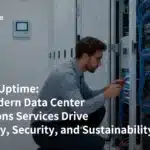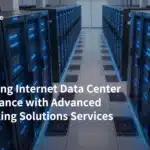In 2025, businesses are facing a critical decision in talent acquisition: choosing between staff augmentation and traditional hiring. This choice is crucial as companies seek to achieve flexibility, control costs, and access top-tier skills. Here’s a focused look at both approaches to help you make an informed decision.
Understanding Staff Augmentation
Staff augmentation involves supplementing your existing team with external professionals, often through specialized agencies like ByteBridge. They ensure a seamless integration of talent into your team for both new projects and ongoing initiatives. Their services extend beyond mere talent placement, offering comprehensive employee lifecycle management and ensuring compliance and security.
Traditional Hiring: The Familiar Path
Traditional hiring means recruiting full-time employees directly. It offers the advantage of building a dedicated, long-term workforce deeply integrated into company culture. However, this process can be time-consuming and resource-intensive, with the recruitment process often taking several weeks or even months. Additionally, businesses must bear the full cost of employment, including benefits, training, and office space, which can be a significant financial burden.
Key Considerations for 2025
Flexibility and Scalability
In today’s volatile market, staff augmentation provides the flexibility to scale your team up or down based on project demands. Organizations using staff augmentation can achieve up to 30% faster scalability compared to those relying solely on traditional hiring, according to a Gartner study.
Cost Efficiency
From a cost perspective, staff augmentation can be more economical. A survey by the National Association of Business Economics indicates that businesses can save up to 20% on labor costs with staff augmentation. You only pay for the time the augmented staff works on your project, without the additional expenses of benefits and office infrastructure.
Access to Specialized Skills
The technological landscape of 2025 is evolving rapidly. Emerging technologies like quantum computing and advanced data analytics are becoming increasingly important. Staff augmentation provides immediate access to a wide range of specialized skills. ByteBridge’s partnerships with local universities ensure a steady supply of talent with cutting-edge knowledge.
When to Choose Each Approach
Traditional hiring remains suitable for core positions that require long-term commitment and deep integration into company culture, such as executive roles and team leaders. For roles that are more project-based, require specialized skills for a limited time, or demand quick scaling in response to market fluctuations, staff augmentation is the superior choice.
Conclusion
The decision between staff augmentation and traditional hiring should align with your business’s specific needs, project nature, and long-term strategic goals. Staff augmentation offers flexibility, cost efficiency, and access to specialized skills, making it ideal for navigating the uncertain and fast-paced markets. However, traditional hiring still holds value for building a stable, dedicated core team. Many forward-thinking companies are adopting a hybrid approach, combining both strategies to maximize their talent acquisition effectiveness. Choose the right strategy to build a workforce that is both agile and resilient, ready to seize the opportunities of 2025 and beyond.






